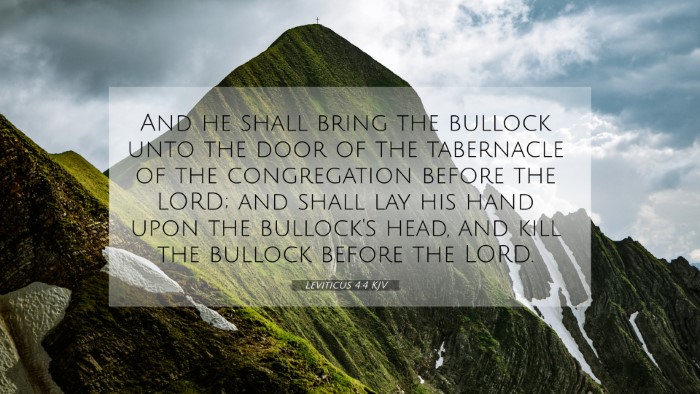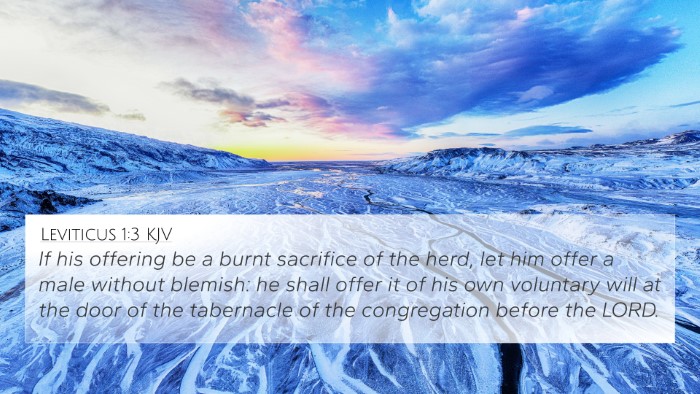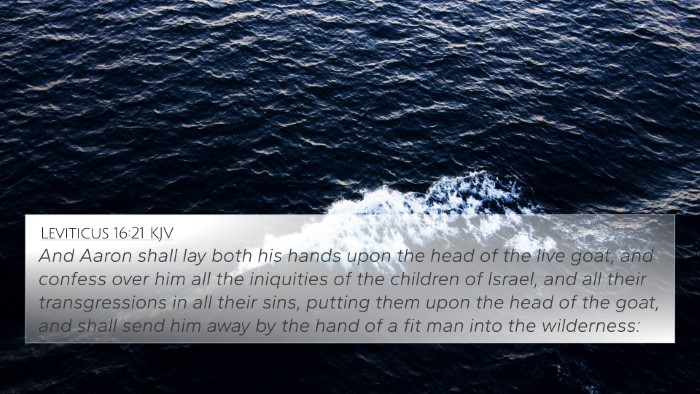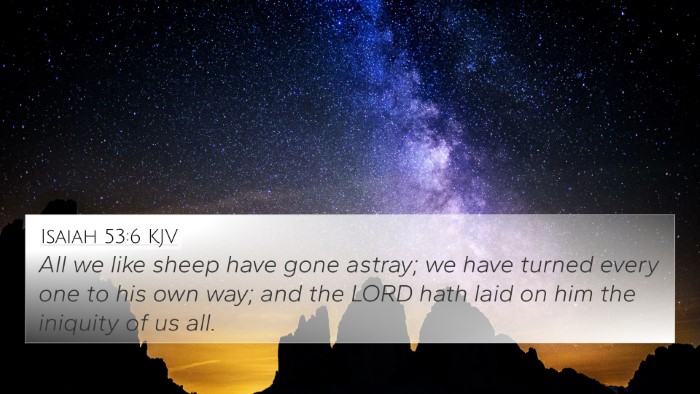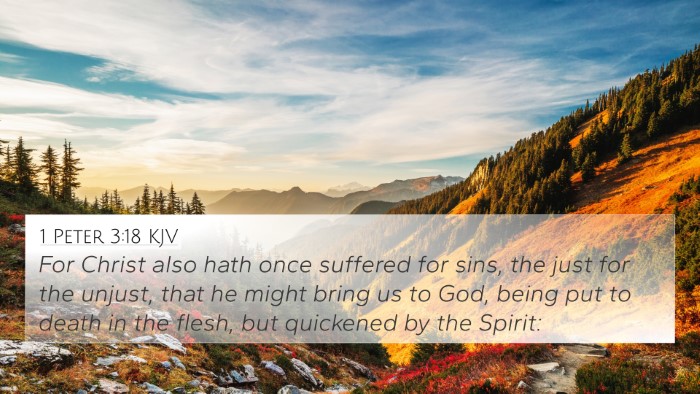Understanding Leviticus 4:4
Leviticus 4:4 presents a vital instruction concerning sin offerings in the Old Testament. This verse states:
“And he shall bring the bullock unto the door of the tabernacle of the congregation before the LORD; and shall lay his hand upon the bullock's head, and kill the bullock before the LORD.”
Summary of the Verse
This scripture outlines the procedure for a person who has sinned unintentionally and needs to present a sin offering. The act of laying hands on the bullock symbolizes identification with the animal and the transference of guilt.
Commentary Insights
The significance of Leviticus 4:4 is deeply enriched by the interpretations from public domain commentaries:
Matthew Henry
Henry emphasizes the need for atonement in the act of sacrifice, showcasing God's provision for sin. He notes that the act of laying hands on the animal signifies the owner’s acknowledgment of sin and the need for cleansing. The sacrifice also points to the greater sacrifice of Christ as the Lamb of God.
Albert Barnes
Barnes highlights the importance of the tabernacle as the designated place for offering sacrifices. He explains that bringing the bullock to the door of the tabernacle indicates a public acknowledgment of one’s sin. The slaughtering of the bullock underscores the seriousness of sin and its consequences, reminding the people of the cost of reconciliation with God.
Adam Clarke
Clarke discusses the ritual dimensions of the offering, emphasizing that it was not merely a physical action but a spiritual necessity. He reflects on the symbolism of blood in atonement and how this act was meant to restore the sinner’s relationship with God, foreshadowing the ultimate sacrifice of Jesus.
Bible Verse Cross-References
This verse connects with several other scriptures that deepen our understanding of sin, atonement, and the sacrificial system established in the Bible:
- Exodus 29:10-14: Discusses the consecration of priests through sacrifices.
- Leviticus 16:15: Outlines the Day of Atonement and its significance in sin covering.
- Isaiah 53:6: Prophetic reference to the suffering servant bearing the sins of many.
- Hebrews 9:22: Explains that without the shedding of blood, there is no remission of sins.
- Romans 3:25: Points out that Christ was put forth as a sacrifice for sin.
- 1 Peter 2:24: Speaks of Jesus bearing our sins in His body on the tree.
- 1 John 1:7: Discusses the cleansing power of the blood of Jesus.
Connections Between Bible Verses
Leviticus 4:4 serves as a significant part of the larger narrative concerning sin and redemption throughout both the Old and New Testaments. Understanding this verse enriches one’s study of:
- The Law: The sacrificial system reflects God's justice and mercy.
- New Testament Fulfillment: Jesus' sacrifice as the Lamb of God parallels the sin offering described here.
- Spiritual Restoration: The necessity of atonement is a recurring theme leading to repentance and forgiveness in various scriptures.
Bible Verse Parallels
By examining these parallel verses, readers can grasp the broader spiritual implications and the continuity of God's redemptive plan:
- Hebrews 10:1-4: Discusses how the law could not make perfect those who draw near.
- Galatians 3:24: Describes the law as a tutor to bring us to Christ.
- Philippians 2:8: Jesus, in the likeness of men, humbled Himself to the point of death on the cross.
Cross-Referencing Biblical Texts
Tools for cross-referencing can enhance one's understanding of this verse and its connections. Utilizing a Bible concordance can help find related scriptures and deepen the study of atonement and sin offerings.
Conclusion
In conclusion, Leviticus 4:4 is a cornerstone verse in understanding God's provision for sin and the serious nature of atonement through sacrifice. By connecting this verse with its counterparts, one can appreciate the rich tapestry of biblical themes that point to redemption and grace. Applying a Bible cross-reference guide can greatly facilitate further exploration of these connections.


